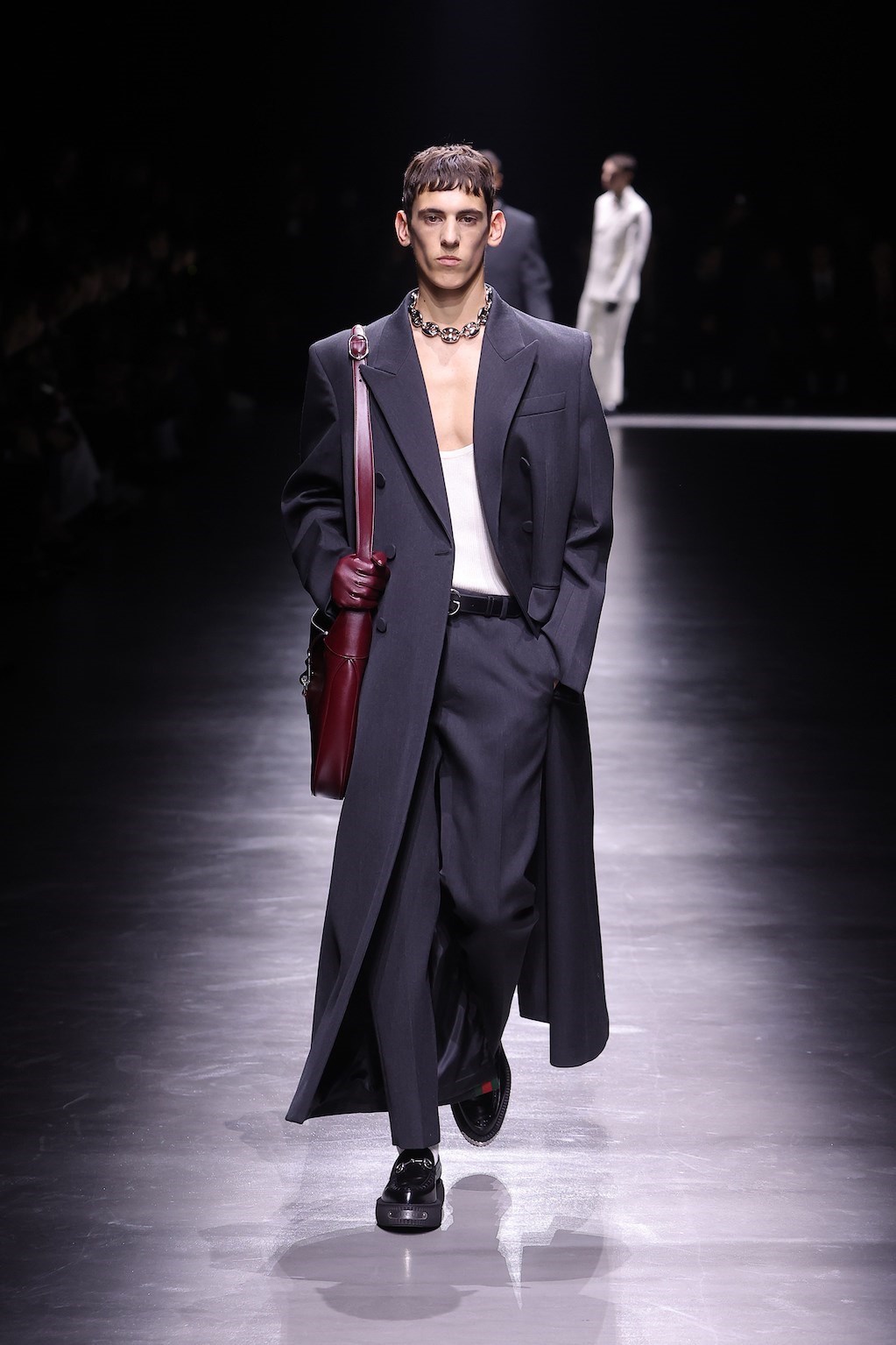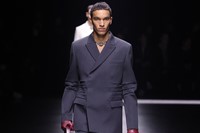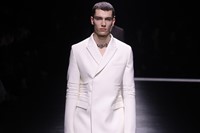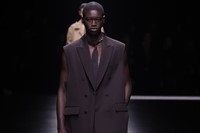Sabato De Sarno’s second Gucci show was much the same as his first. Which was exactly the point. The notion, he said, was mirroring – so his Autumn/Winter 2024 menswear collection opened with a redux of the first look of his debut. The short-shorts of the womenswear were switched to trousers (it is winter, after all), and the platform-stacked Gucci loafers became creepers that, while thick-soled, didn’t tower at quite the great height. But everything else was present and correct, including the deep red Jackie bag, double-G clasped belt and longline coat with a stripe of signature webbing up the back vent. Ancòra – encore.
There were other repeats – a crystal-collared sailor jacket and wide-cut jeans, a zip-up Harrington in navy and patchwork python outerwear in stripes like the Gucci webbing. Those were almost direct reflections of key looks from the women’s show, featured in Gucci’s advertising campaign and in stores now. But there were other ideas that flowed between the two shows – embroidered mini-dresses becoming slithery, sensuous crystal tank-tops, crepe mini-dresses reinterpreted as easy, elongated jackets, and slim, Mod-ish tailoring that reprised silhouettes he debuted on celebrities at the Gucci-sponsored LACMA Art + Film Gala in November. Mirroring isn’t always a precise reflection – so his Gucci logo was distorted, as if triple-exposed, and seemed hand-painted on leathers, or fuzzily woven into intricate jacquard.
What it made me think of, a lot, was Tom Ford, and the first heady glory days of Gucci in the 1990s. De Sarno turns 41 in March – he remembers those Gucci days well. And for anyone who doesn’t, the touring Gucci Cosmos exhibition that just closed in London contains ample reminders. A stand-out element in that show are bunches of Tom Ford looks from his seminal Autumn/Winter 1996 show, dedicated to Studio 54. Those looks often slipstreamed between masculine and feminine, male and female models wearing outfits – like that famous red velvet tuxedo suit – that almost exactly matched. Ring any bells?
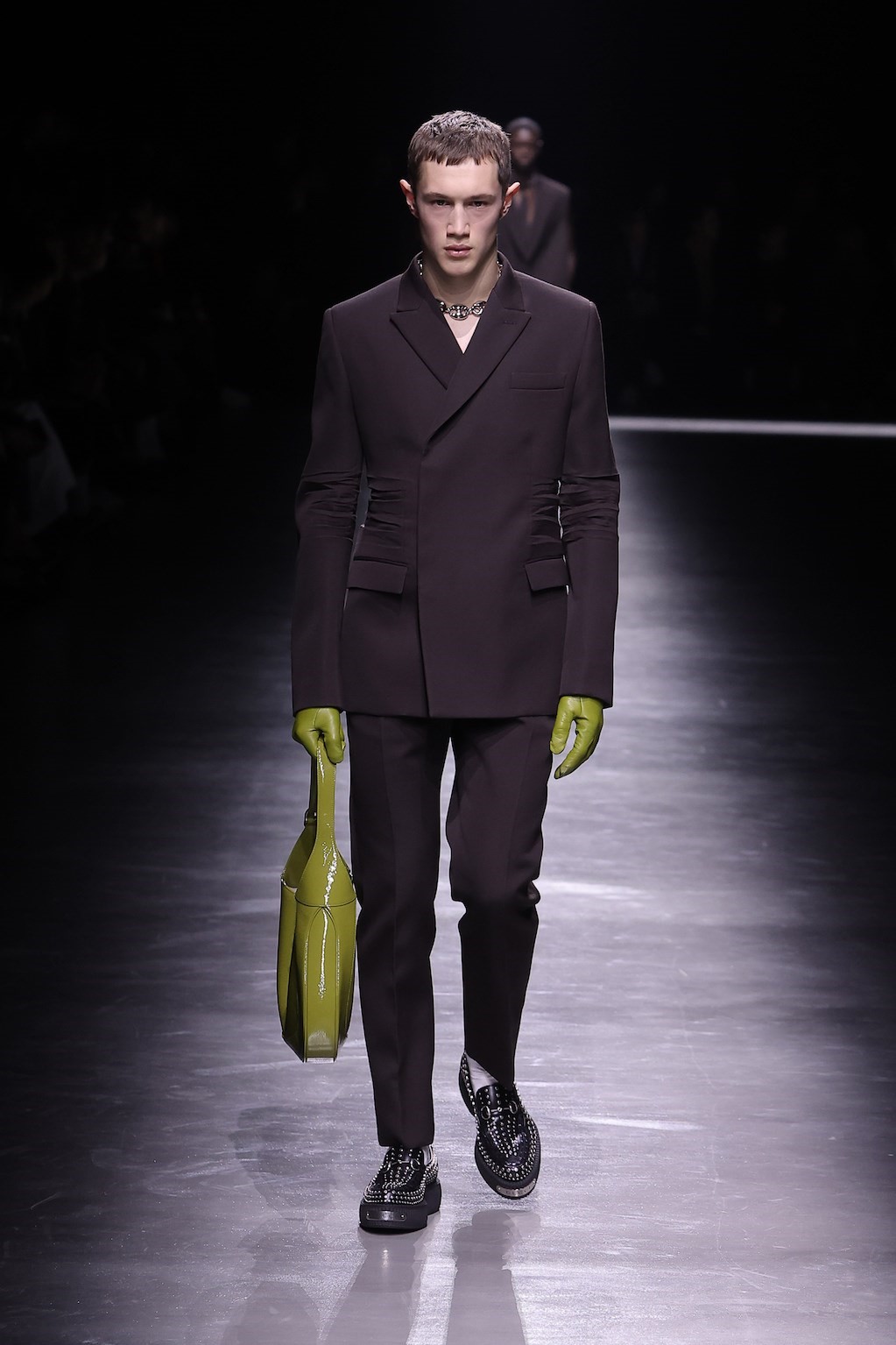
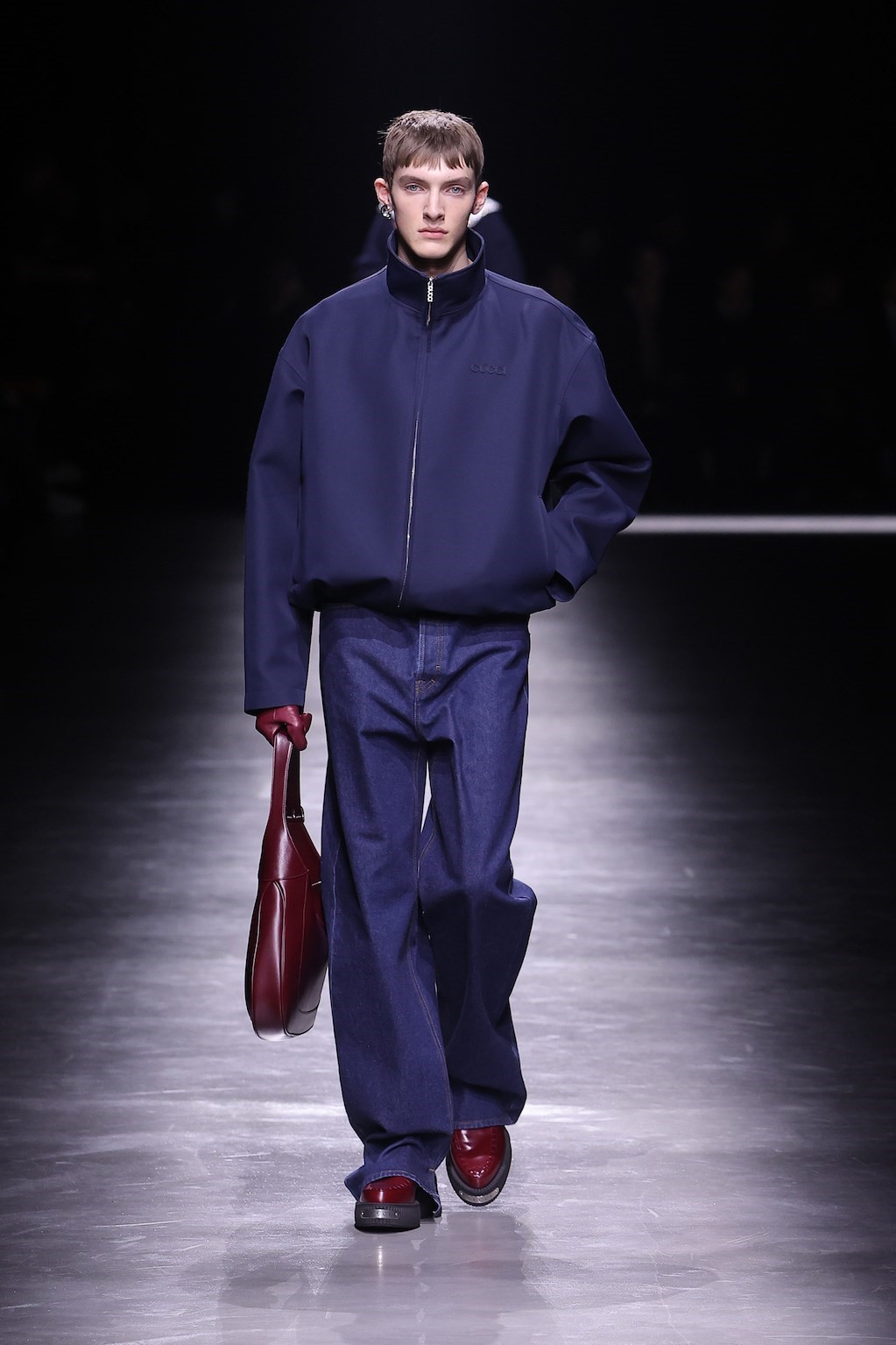
“I love the archive, I love history, I love to go deep into this information,” De Sarno said, at a preview barely 24 hours before his show. “Not just aesthetically, but the story.” There were images of Ford’s Gucci pinned on his moodboard, as well as a picture of Samuel Beckett by Lucio Berzioli from 1971, a Gucci bag slung over one shoulder – just in case you thought men with ostensibly ‘feminine’ bags were a modern conceit. It isn’t the Jackie, but that bag for De Sarno is a house icon to be revived and reiterated. Rather than designing his own bag (not just yet, at least) he is asserting Gucci heritage and iconography from across 103 years of history.
So, the mens-women cross-over nodded to Ford, and the bags and horse-bit loafers came from Gucci’s first flush of success in the mid-20th century. They undeniably spell out Gucci. And De Sarno wants his clothes to do the same – hence this exercise in reiteration, hammering home what he wants his Gucci to mean. The message was clean lines, exquisite fabrics – viewing those to-the-floor coats up close, they’re drop-dead gorgeous – painstaking embroideries and craft, craft, craft. Of course, there’s a focus on leather, which is Gucci’s speciality – bags were supple and buttery-soft, lined often in the same leather as the exterior, a notion extended to jackets with interiors bonded in contrast leather, the entire seemingly seamless. But for De Sarno, that notion of craft is the essence of Gucci, his Gucci. It’s its meaning. “I find a lot of people in Gucci with amazing know-how – and it makes my job very easy.” De Sarno said. “Everything is possible.”
